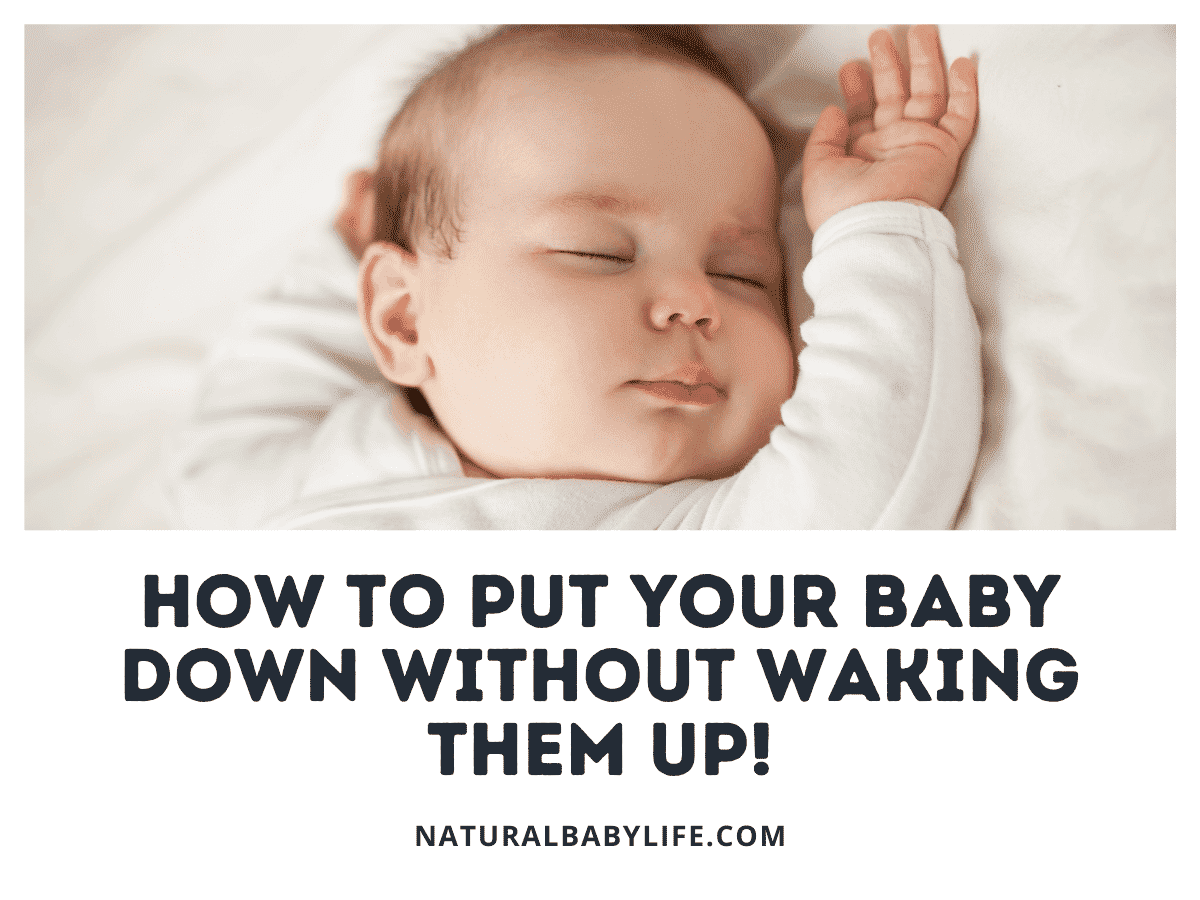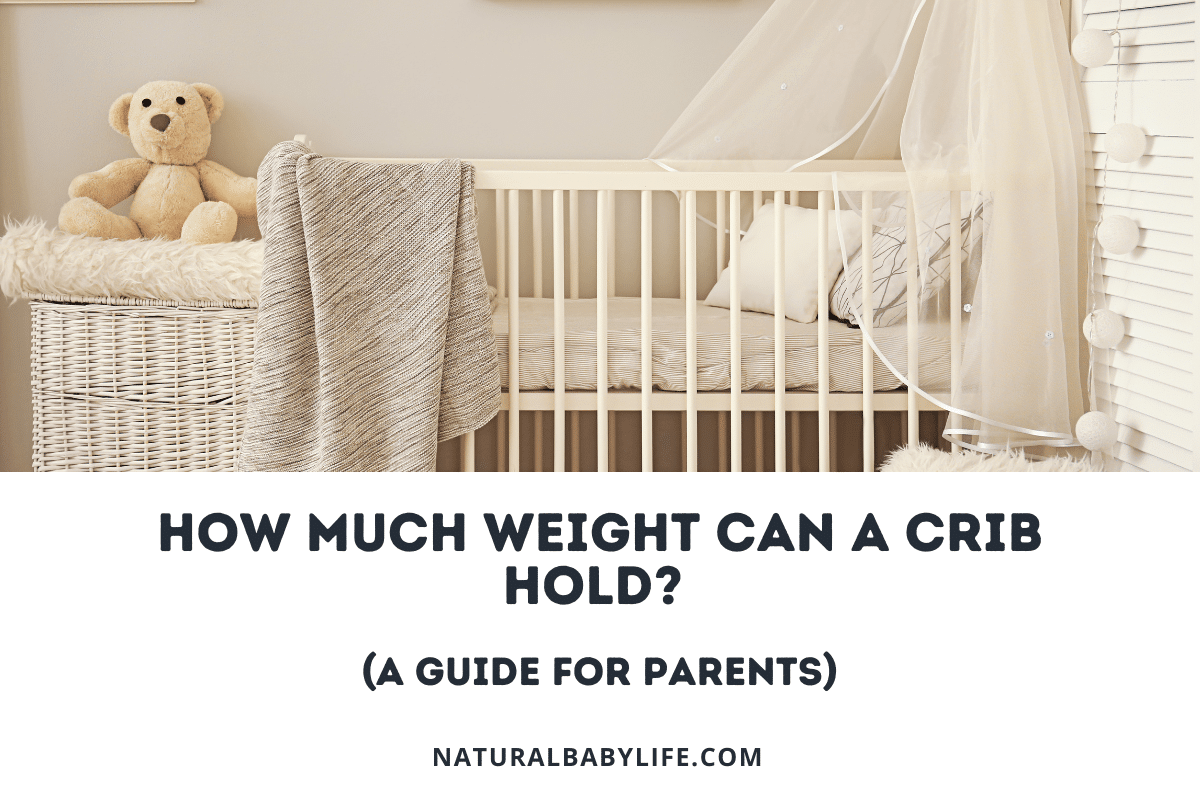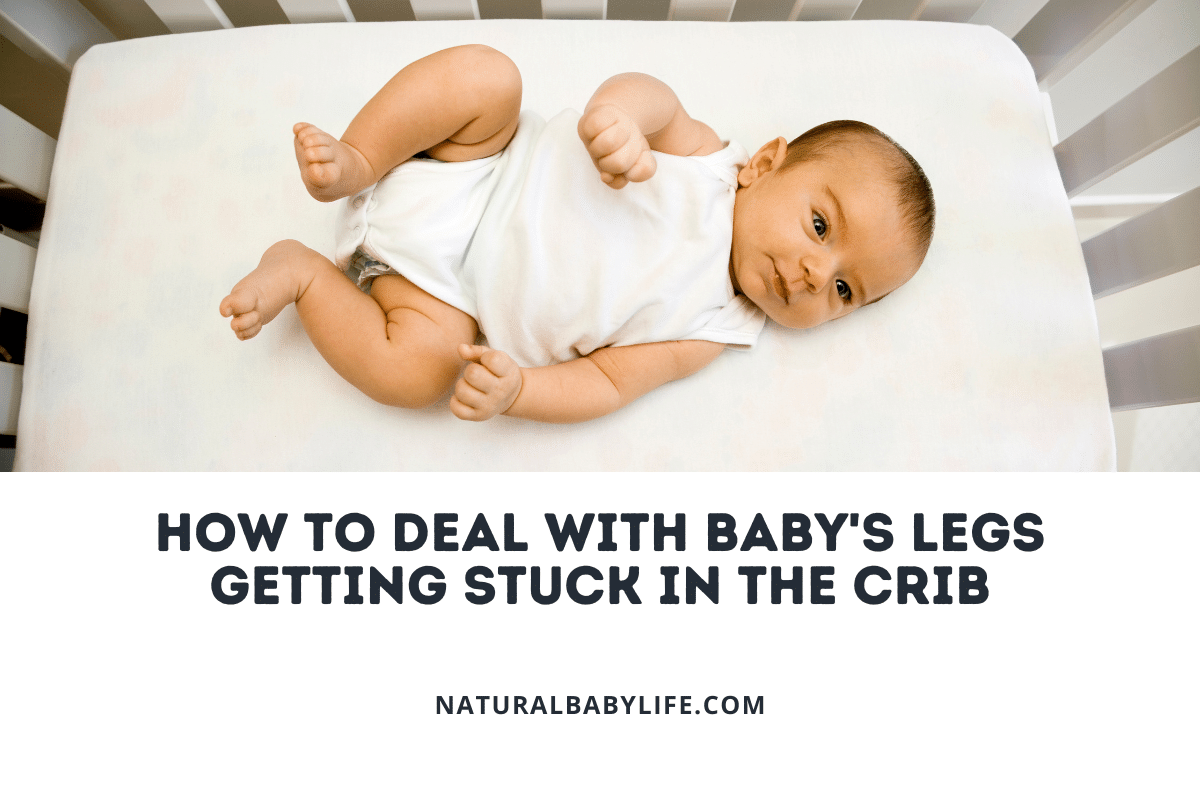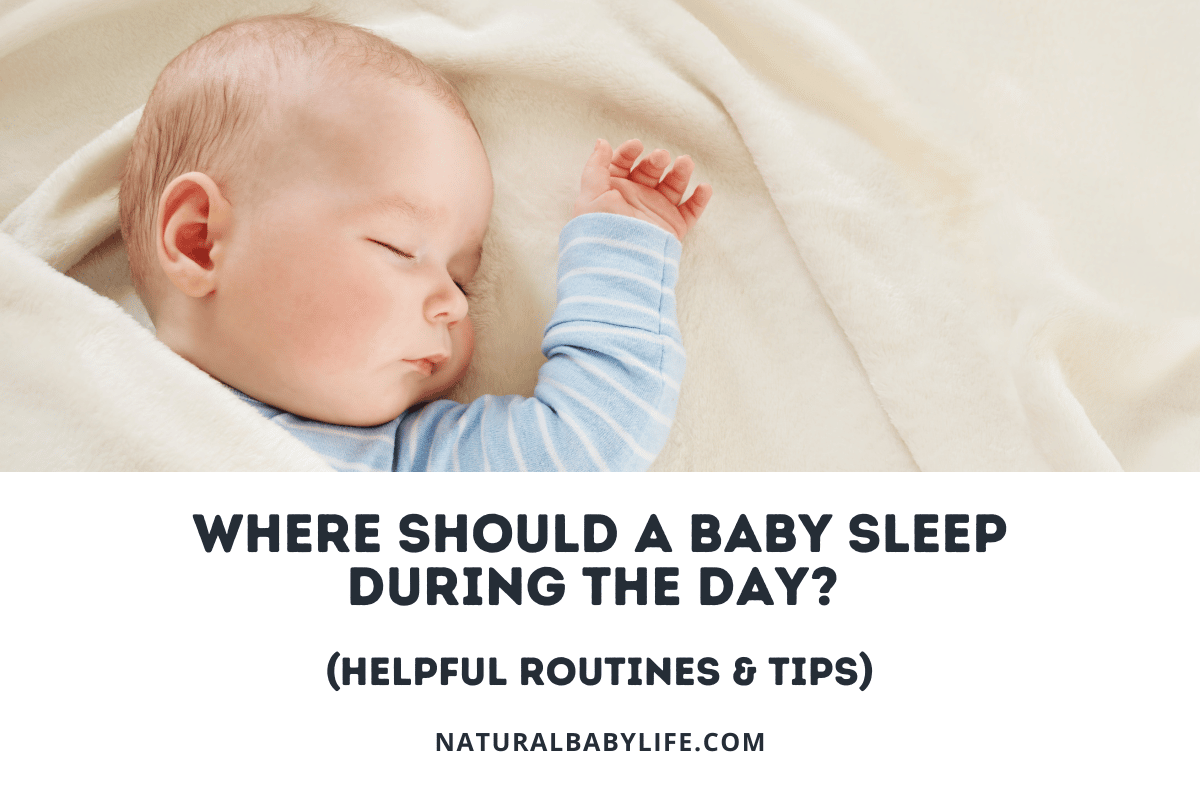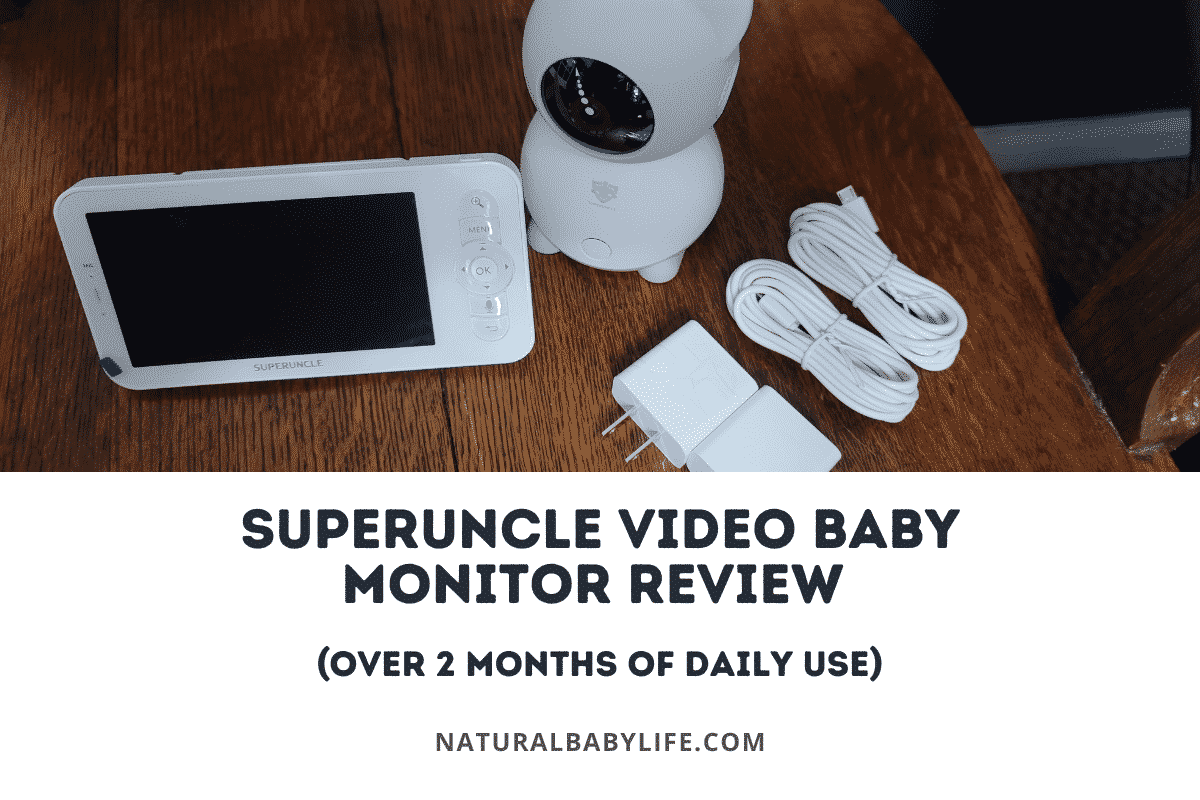Many parents struggle with getting their baby to sleep only to have them wake up once they are put down into a bassinet or crib. Based on my experience with four babies, there are ways to avoid waking a baby when putting her down.
The best way to put your baby down without waking her is to prepare the bed ahead of time, ensure she is warmly dressed and freshly changed, and wait until she is in the deep sleep stage. Placing your baby into the crib bottom first, using a weighted swaddle or sleep sack, or making use of a topponcino is also useful to keep her asleep.
Continue reading to discover various tips and tricks for helping your angel continue to sleep like one after you put him down.
Table of Contents
The best way to put a baby down without waking them up
There are many schools of thought on where and how a baby should sleep. Some parents always put their babies down in a crib or bassinet. Some prefer babywearing, letting baby sleep on them while they go about their day. Still others choose contact napping – always holding or laying down with their sleeping child and saving other chores and tasks for when the baby is awake.
Regardless of how you choose to have your baby sleep, there will inevitably come a time when you need to put your baby down and hope he doesn’t wake up before you do whatever it is that needs doing.
Here are some tried and true tips for helping your baby stay asleep when you put him down.
Prepare the bed
Whether you use a crib or bassinet, make sure your baby’s sleeping space is clean and clear before you rock your little one to sleep. The last thing you need is to find a sheet covered in spit-up or a crib full of laundry when you go to put your baby down. Enlist help from family if needed.
Prepare the environment
If your baby uses a sound machine, make sure it is already turned on and to the correct setting and volume. Also, be sure to check the lighting in the room and adjust, as necessary, to what your baby is most used to. Check the temperature in the room as well – make sure that your baby will not be too cold or too hot in whatever they are wearing to sleep.
The ideal temperature for a baby’s room is between 68 and 72 degrees F during both the summer and winter.
Swaddle
Swaddling has long been used to help infants fall asleep and stay asleep. It works by preventing their startle reflex – a reflex often triggered when transferring a baby from your arms. It also helps maintain the warmth they felt while in your arms.
Today, there are a variety of swaddle products available to make swaddling easier if you don’t want to use the traditional swaddle blanket. There are also many “arms-out” and transition swaddled and sleep sacks that are safe for continued use after your baby starts rolling.
Warm the bed
Transferring your baby from your warm, safe arms to a cold mattress is very likely to wake him up. Try warming the bed with a hot water bottle for a few minutes before putting your baby down.
Note: Do not use electric blanket heaters to warm your baby’s bed as these can make the space too hot. Also, be sure to remove the hot water bottle from the bed and test the mattress heat before laying the baby down – it should be warm, not hot.
Use a Topponcino
A Topponcino is a thin, flat pillow that can be used while holding, feeding, and transferring your baby. Because the baby is already laying on the topponcino, while you hold him, he won’t even notice when you lay him down, still on the topponcino.
A well-made topponcino is basically a small, flexible mattress. It should not be thick or puffy and should have a fitted cover. There are many topponcinos available on Etsy that are super cute but they do not all meet these safety recommendations. The Topponcino Company makes simple topponcinos and covers for a reasonable price and you can find them right here.
These little pillows might not be incredibly well known or popular but they work amazingly well for breastfeeding mothers because you can simply place your baby on top of the pillow while feeding and then easily set the baby down into wherever she is sleeping!
Stay close
As you are laying your baby down, keep him close to your body until he is laying on the mattress. This means lowering your body over the crib or bassinet rather than reaching down with the baby in your arms. This will help your baby feel more secure. Once down, you can ease your arms out from under your baby.
If you bedshare, have a bedside co-sleeper, or a side-car crib you can make this even simpler, by lying down in your bed with your baby on your chest, then slowly rolling your baby into his sleeping space, maintaining contact the whole time. Once you are sure that your baby is still fast asleep, simply ninja-roll away.
Bottoms first
If you try to lower your baby into bed head first, you may trigger his startle reflex as the shift may cause him to think he is going to fall. Lower your baby into his crib bottom first, in almost a sitting position. Then slowly lay his head down.
Depending on how you hold your baby while rocking her to sleep, this could be easier or more difficult but its good to pay attention during the process!
Maintain Contact
As you are backing away, keep one hand on your baby, maintaining a light, reassuring pressure for a minute or two longer. Then slowly release the pressure and lift your hand. If your baby stirs, you can always put your hand back for another moment.
This is a neat trick that I’ve found to work especially well for some babies and less so for others. If you typically use a weighted sleep sack or swaddle then this will tend to work well after you have transitioned away from them with your older babies.
How long to hold baby before putting down
Babies sleep a lot and, just like adults, their sleep is divided into stages.
- Stage 1: drowsy
- Stage 2: light sleep
- Stage 3: deep sleep
- Stage 4: very deep sleep
There is also REM or rapid-eye-movement sleep, which is where babies spend about half of their sleep, unlike adults who are only in REM sleep for about 20% of their sleep time.
When babies first fall asleep, they progress through the stages in order until they reach stage 4. This is the shortest stage for babies. They then move backward from stage 4, to 3, to 2 before settling in REM sleep for a while.
The cycle may repeat several times – or your baby may wake up. Babies tend to wake up most frequently when transitioning to stage 2. They can also be easily woken during REM sleep.
If you choose to rock or feed your baby to sleep, you will want to wait until stage 3 to put your baby down. Each sleep stage can take about 5-15 minutes, so plan to hold your baby for a minimum of 15-45 minutes – longer if your baby wasn’t drowsy to begin with.
How to put baby in lowered crib
Newborns usually sleep in a raised crib or bassinet but, once they start rolling, it’s best to switch to a lowered crib or playpen. This can make laying your sleeping baby down much more difficult – especially if you are short or recovering from a c-section.
Here are some tips to help you get your baby into his bed without waking him or hurting yourself:
- Tighten your stomach muscles. Obviously, you can’t bend with your knees in this case, so to help protect your back you can tuck in your stomach.
- Lean over and then lower the baby. You won’t be able to keep the baby close to your body, as you may need to extend your arms all the way to reach the mattress. Lean as far as you can, without falling in, and then slowly lower your baby.
- Gentle drop. Your farthest reach might not be far enough. If you are an inch or two short of the mattress, practice a gentle drop – bottoms first and then slowly letting your baby’s body and head follow.
- Get a stool. If all else fails, invest in a strong, sturdy stool to give yourself a height boost. Tuck one knee into the crib rails to make sure you don’t fall in.
How to put sleeping baby down on tummy
The AAP recommends always putting babies down on their backs to sleep and only allowing them to sleep on their stomachs if they roll on their own. But some babies sleep best or will only sleep on their stomachs. If your baby prefers tummy sleeping, use these tips to lay him down safely.
- Do not swaddle. Tummy sleepers should never be swaddled as they need their arms free to roll over. However, you may use an arms-out sleep sack.
- Side rocking. When you are rocking your baby to sleep, turn him on his side with his back to you. Then, when you lay him down, you can gently roll him onto his tummy.
- Football hold. Drape your baby over your arm on his tummy – this is a common hold for comforting colicky babies but it can also make putting your tummy sleeper down much easier.
How to move a sleeping baby
The best way to move a sleeping baby without waking them is to make sure they are in deep sleep (stage 3) before you move them. You can do this with the arm test – gently lift your baby’s arm a few inches and then let it fall. If they don’t show any signs of waking, you can probably move them.
Go slow and steady and try to keep your movements smooth. Tuck your baby close to you as soon as you pick him up – this is usually your baby’s favorite spot and, even if he does stir, he will settle quickly in your arms.
Wait a few minutes before putting him down again to make sure he has settled back into a deep sleep.
When should you start putting your baby down awake?
“Drowsy but awake” are the words most commonly used by sleep consultants and pediatricians. The idea is that this method will allow your baby to learn to self-soothe and fall asleep independently. There is no set time to start doing this – you can start from birth if you want or introduce it later.
By about 4 months old, most babies start to develop more routine sleeping patterns. Many sleep consultants and pediatricians recommend starting the “drowsy but awake” routine at this point to break any poor sleep-onset associations. There is also often a sleep regression around this time. Regressions can be useful for introducing new routines.
However, these are only recommendations – not hard rules. Many parents find that the “drowsy but awake” method only results in their babies being fully awake again and usually crying. Parents who choose not to use “cry it out” or other sleep training methods, may not have much success with putting their baby down awake but you will likely find that it will work better as your child grows.
Ultimately, you will need to find a method that works well for your baby and your family. Since every baby is different, you may find that your techniques change with each child. But don’t worry – every child will eventually learn to fall asleep on their own.

